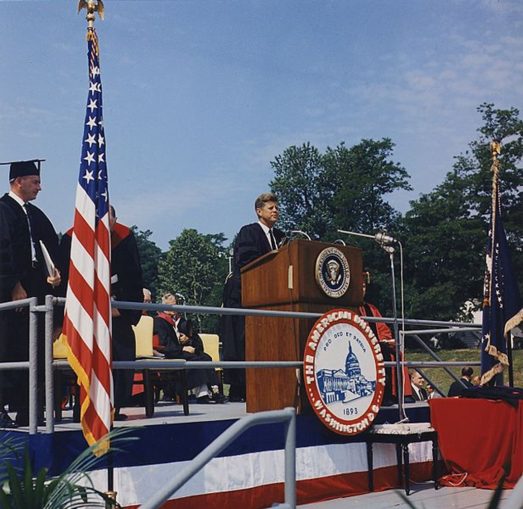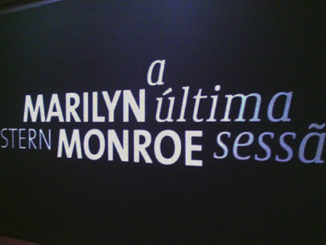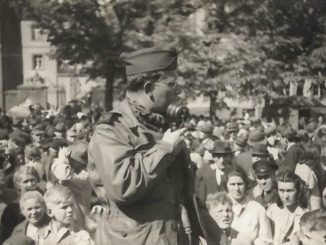
Cecil Stoughton, Public domain, via Wikimedia Commons
“Treason doth never prosper, what’s the reason?
For if it prosper, none dare call it Treason.” – John Harington
Shortly after 12:30 pm local time on November 22, 1963, the medical staff at Parkland Memorial Hospital in Dallas received shocking news. President John F. Kennedy had been shot and was on his way to their trauma center. The hospital’s best medical team quickly assembled, steeling themselves for a day they could have never imagined but would surely never forget. At 12:36 pm, the presidential motorcade arrived. What happened during the next few hours would change the arc of history forever. None of this is news to the Puffinati, of course, although one of the most important reasons might be.
Despite the critical role eyewitness testimony plays in Western judicial systems, witnesses are not always accurate in their recollection of events. This is especially true when people are surprised, have only a few seconds to observe their surroundings before a crime concludes, and are untrained in the skill of putting important details to memory under duress. If the woman to the left of you in the queue at the supermarket till is suddenly mugged, it is understandable that you might get the colour of the assailant’s shirt wrong when telling your story to the police. It all happened so fast, and your attention quickly turned to helping the woman up from the floor in the moments after the assault. You think it was orange, but it could well have been brown.
As far as witness quality goes, those doctors and nurses at Parkland Memorial were as good as they come. All were trained professionals, they were put on notice ahead of the president’s arrival, and they had ample time to observe his condition mere minutes after he was shot. The lighting was good, the setting familiar. They shared observations among themselves as they tried in vain to save his life, and they had treated countless gunshot victims during their careers. Most importantly, they also knew the full weight of history would soon fall on their shoulders, and they would be wise to pay extreme attention to detail. In the hours after the president’s body was hurriedly removed and flown back to Washington, the Parkland medical team followed protocol and put to paper copious notes of what had just transpired. Some were written by hand, others typed. More than 50 years after the tragedy, those notes still exist at the US National Archives and Records Administration, open for any curious citizen to read. This set of documents is all one needs to come to a definitive conclusion about what happened in Dallas on that fateful day.
Why?
Because the doctors and nurses at Parkland were not yet aware of what they were supposed to write and so they simply wrote the truth.
The truth told in those notes is clear, definitive, and comprehensive in its unanimity. The president had a giant, gaping wound in the back right corner of his head, a significant part of his brain had been blasted outward from front to back, and he was all but dead before he arrived at the hospital. That’s what the best trained and least biased witnesses with the most intimate access to Kennedy in the minutes after he was shot universally claimed, and there is no legitimate reason or compelling counter-evidence to refute those observations. That the autopsy photos are inconsistent with the Parkland notes says more about the autopsy photos than the stark definitiveness of the notes. That the Zapruder film is inconsistent with the Parkland notes says more about the state of the Zapruder film than the plain definitiveness of the notes. That some Parkland doctors later changed their recollection says more about the pressure they must have felt to do so than the direct definitiveness of the notes.
The notes are all you need to read, and doing so will permanently alter your perspective on the ugly history that follows.
A great benefit of having read the notes is the ability to dismiss all other controversial aspects of the Kennedy assassination debate, most of which are littered with the hallmarks of contrived misdirections on the part of the Intelligence community. One need not indulge in speculation about throat wounds, magic bullets, Lee Harvey Oswald’s various comings and goings, this film or that. Does one of the most iconic pictures of the assassination — the infamous Altgens photo number 6 — prove that Oswald was watching the events unfold at ground level, wearing the very clothes he was later arrested in, no less? Who cares. The president’s head had a gaping wound out the back of it, and that is really all that matters.
As the United States barrels down the pike towards a second civil war, one can’t help but view the latest assassination attempt of a major political figure as an infected flare-up from a deep wound that was never allowed to heal. In the back of many Americans’ minds, they know intuitively that Kennedy was likely killed in furtherance of the insatiable demands of the military-industrial complex. When you are in the bomb-making business, peace is a working capital problem, and Kennedy’s infamous “Peace Speech” at American University—delivered just months before his murder— surely sealed his fate. With a popular president rubbed out and the suitably compliant & controlled Lyndon Johnson installed in his place, the spice was allowed to flow. The spice subsequently flowed in Vietnam, Grenada, Panama, Iraq (twice), Bosnia, Kosovo, Afghanistan, Libya, and now Ukraine. It flowed in dozens of coups in faraway places few in the US care much about. It might yet flow in the Middle East once again and in the South China Sea or the Taiwan Strait.
If you doubt this interpretation of history, simply read Curt Gentry’s biography of J. Edgar Hoover, Robert Caro’s iconic work on Johnson, the copious official records of the Church Committee, or President Dwight Eisenhower’s farewell address. Watch JFK’s peace speech at American University in June 1963 and find a single word you disagree with. Few can. Watch Colin Powell make the case at the United Nations that weapons of mass destruction existed in Iraq and find any material statement there that ages well. It’s all plainly available to consume, but burying the consequences of having done so in the back of your mind will be an understandable cope. The spice must flow, and the rest of the world correctly views US foreign policy through this lens.
The current president of the United States is suffering from serious cognitive decline, something that has been obvious to any objective observer since before the 2020 election. He is being propped up by a cabal of unelected insiders, and barely able to complete a sentence in public. The citizenry has no idea who is actually in charge, but they do know it is not this man. The former president and current Republican nominee came within an inch of being assassinated on live television last Saturday. Had that bullet struck its target, the resulting societal convulsions would have surely tipped the country into the abyss. A shockingly high number of people are publicly bemoaning the miss on social media, unaware of the violence they are inviting into their own lives. Should it arrive, I suspect most will be wholly unprepared for it.
Many wonder how it could be that the U.S. finds itself in this position. We know, the Parkland medical team knows, and in the back of your mind, you know, too. The same forces that eliminated Kennedy are behind the dangerous charade we see before us now. An unbroken line of war and political farce was born on that fateful day, the latter necessary to keep the former normalised. The U.S. has never fully dealt with the events of 1963. Unless and until it does, its survival remains in significant doubt.
Whether it still can seems vanishingly unlikely.
© DJM 2024



